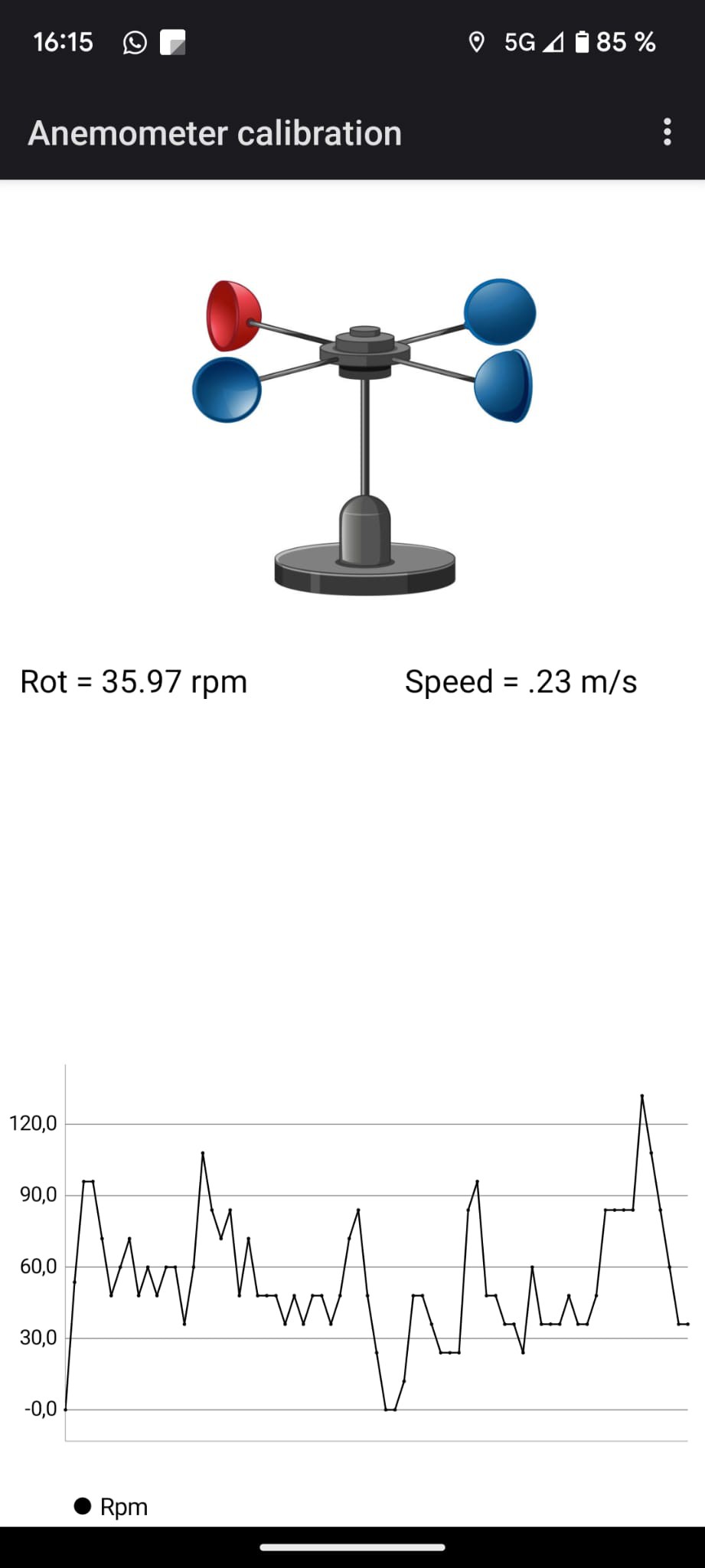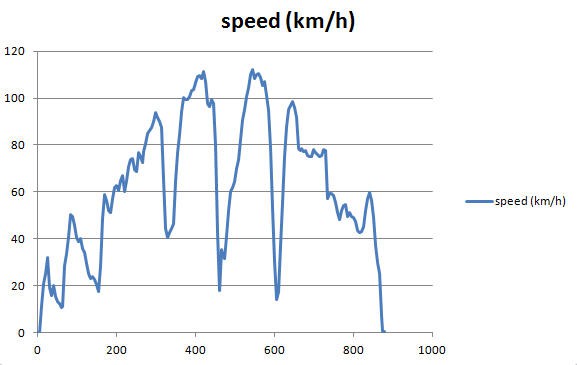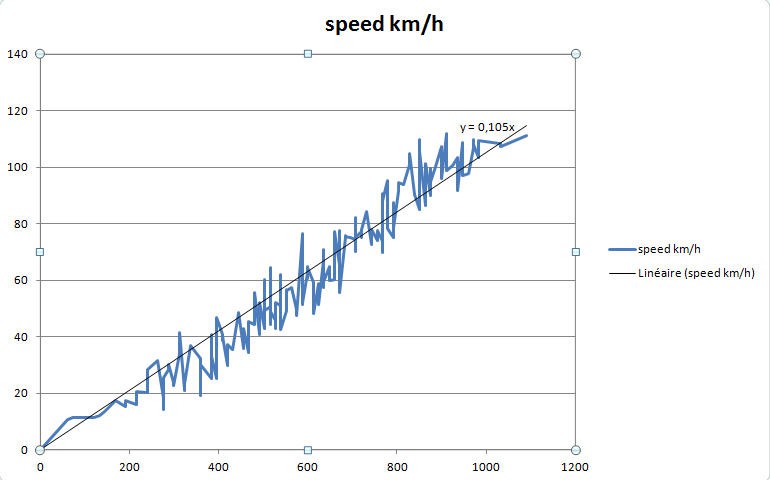Let's start by the anemometer which is probably the most complex to calibrate
Anemometer calibration
The anemometer outputs one tick every full rotation of the cup. So it's easy to compute the RPM value if you count the ticks and divide this value by the time of measurement.
One could find an approximate value of the wind speed by calculating the distance a cup does in a full rotation.
You can discover the radius of the circle made by the anemometer by measuring the distance from the centre to the edge of one of the cups. Once you know the radius, you can find the circumference with the formula 2 * pi * radius.
Speed (m/min ) = RPM * 2 * pi * radius
But this would give very unacurate value as you don't take into account the real efficiency of the cup, the drag of the arms, the loss into the bearing etc...
So I decided to try a "brute force" approach: install the anemometer into a car window, measure the RPM of the cups and measure the speed of the car... Assuming that you choose a no wind day you should get a good relation between rpm and (car/wind) speed.
So I have coded a small android application which receives from the anemometer the RPM and which reads the GPS speed of the smartphone, (thus of the car, thus of the wind !).

All the values are recorded and can be exported into a .csv file.
I tried to drive at constant speed, but this wasn't possible due to trafic... Here is the speed profile of my trip:

It lasted 15 minutes (x axis in seconds). And I could reach 110 km/h. (y axis)
Then you can open this file into excel and plot speed as a function of RPM and finally sort the values in ascending rpm.
And the magic is there, you almost get a linear behavior. This was expected but seeing it is a pleasure !
And now you can let Excel help you to fit a linear curve on the values.

And the result is not that bad! (noise of the speed of my car is pretty much filtered).
The anemometer has proven to work in the range 5km/h to 110km/h and could for sure sustain higher wind speed... but not tested into my car !
Speed in km/h can be derived from the RPM of the cup by the formula Speed = 0.105 * RPM
This formula is now embeded into the firmware and my anemometer is calibrated. If you 3Dprint the cups at the same dimension and use the same ball bearing, then this formula shouldn't need to be changed for your anemometer !
 JP Gleyzes
JP Gleyzes
Discussions
Become a Hackaday.io Member
Create an account to leave a comment. Already have an account? Log In.